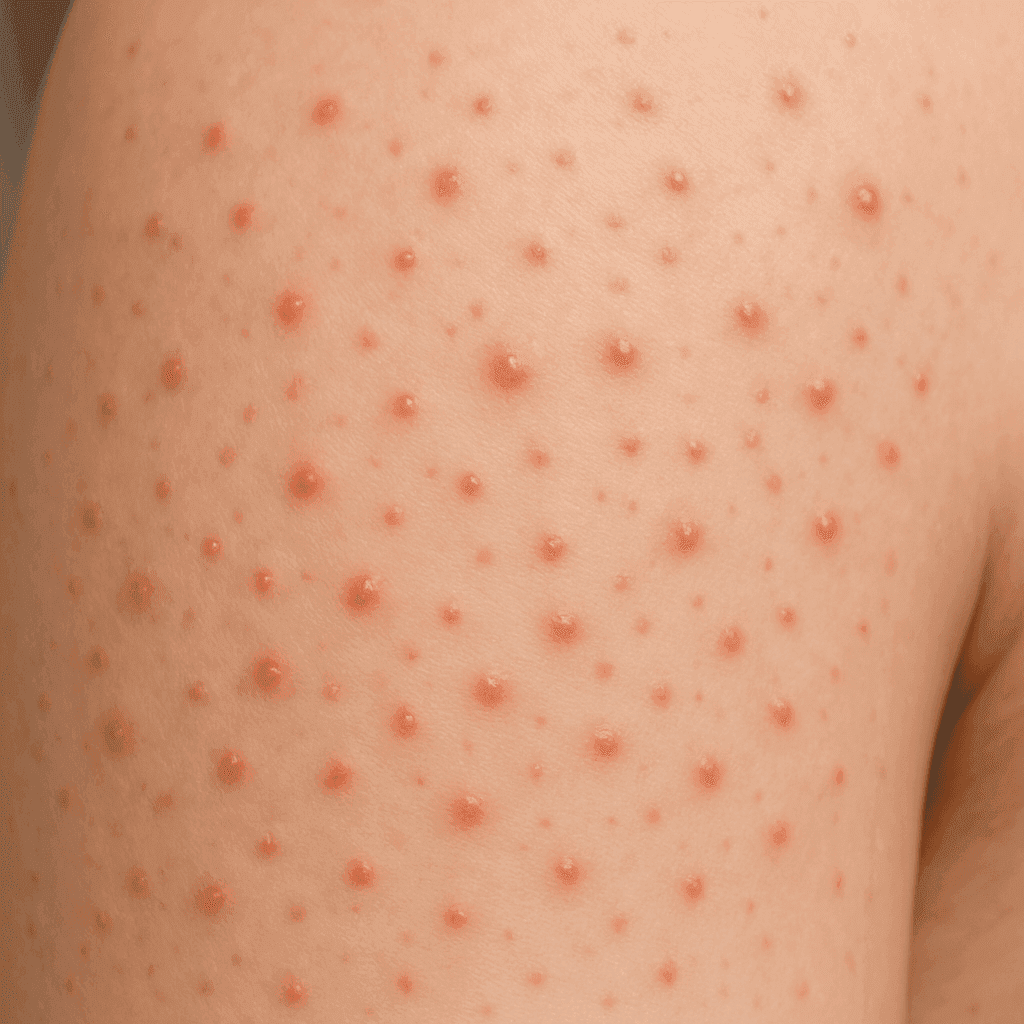Red pimples - causes, treatment and diagnosis
Causes, treatment and diagnosis of red pustules on the skin.
Introduction
Red pustules on the skin can be a source of concern in both children and adults. They can appear in different parts of the body and have a variety of causes. From allergies to skin diseases to mechanical irritation, each of these causes requires a different approach. In this article, we will discuss the most common causes, treatments and diagnosis of red pimples.
Causes of red pimples
Allergic reactions
Skin allergies are one of the most common causes of red pimples. The mechanism of allergy involves an overreaction of the immune system to foreign substances, called allergens. These may include pollen, animal hair, cosmetics or certain foods. The pustules often appear accompanied by itching and swelling.
Skin diseases
Acne - most commonly affectsadolescents, but can also occur in adults. It is characterised by blackheads, pimples and papules.
Eczema - manifests as dry, itchy skin with red patches. Often occurs in children.
Psoriasis - characterised by red, scaly skin. Can be hereditary and requires specialist treatment.
External factors
Mechanical irritation - can result from wearing tight clothing that rubs against the skin. They often occur on the arms, back and buttocks.
Sensitisation to cosmetics - certain ingredients in cosmetics can cause allergic reactions, leading to red pimples.
Other causes
Viral and bacterial infections - such as chickenpox or shingles, can cause pimples to appear.
Hormonal problems - especially in women, hormonal changes can affect the skin, leading to pimples.
Diagnosis of red pimples
When red pimples do not disappear, get worse or are accompanied by other symptoms, it is worth consulting a dermatologist. The specialist may recommend blood tests, allergy tests or a skin biopsy to determine the exact cause of the skin lesions. Early diagnosis allows for faster and more effective treatment.
Treatment of red pimples
Pharmacological treatment
Over-the-counter medications, such as hydrocortisone creams, may help to relieve symptoms. For more severe cases, your doctor may prescribe stronger prescription drugs such as antibiotics or antihistamines.
Home remedies
Natural methods such as using aloe vera, oatmeal or coconut oil can help relieve itching and redness. It is also important to avoid irritating cosmetics and maintain good skin hygiene.
Red pimples in babies and children
Red pimples in children can be the result of perspiration, food allergies or other conditions. Pimples associated with nappy rash are common in babies. It is important to keep an eye on your child and consult your paediatrician if there are any worrying symptoms.
Prevention of red pimples
To prevent red pimples, it is helpful to take care of your skin hygiene and care. Avoiding irritants, such as harsh detergents or inappropriate cosmetics, can help keep the skin healthy. Regular moisturising and sun protection are also key.
Red pimples and more serious conditions
Red pimples can be a symptom of more serious conditions, such as autoimmune diseases or infections. It is therefore important not to ignore the symptoms and, if in doubt, consult your doctor. Early diagnosis and treatment can prevent the condition from worsening.
Summary
Red pimples can have a variety of causes, from mild irritation to more serious conditions. It is crucial to understand what can cause them and how to prevent and treat them. If in doubt, it is always worth consulting your doctor to avoid unnecessary risks.
FAQ
Are red pimples dangerous?
Not always. They are often the result of mild irritation, but can also indicate more serious conditions.
How do I treat red pimples with home remedies?
You can use natural soothing remedies like aloe vera or coconut oil and avoid irritating cosmetics.
When should you go to the doctor with red pimples?
If the pimples last longer, get worse or are accompanied by other symptoms, it is advisable to consult a dermatologist.

